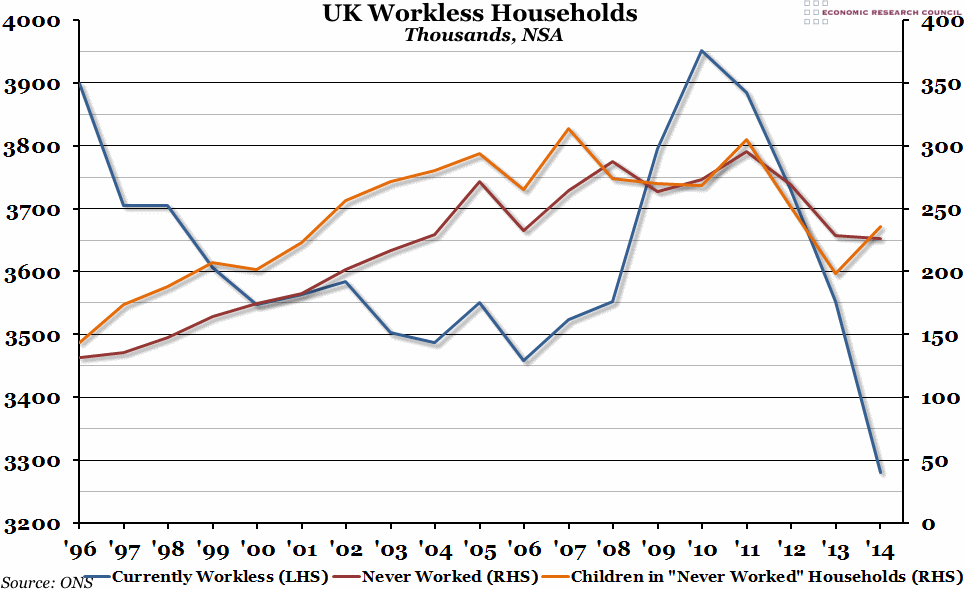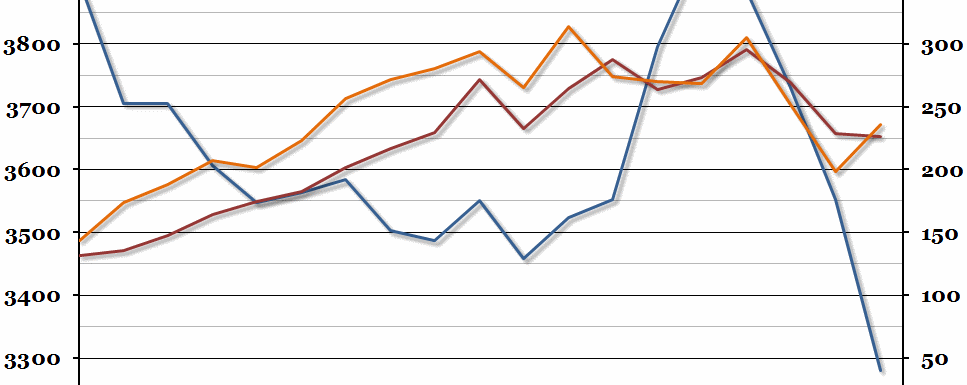
Summary
The annual data on workless households in the UK was released this week, and it showed a record decrease in the number of households without work. However, it wasn’t all good news.
What does the chart show?
The blue line, measured against the left hand axis, shows the total number of households (in thousands) that do not contain anyone who is currently working, over the period April-June each year. This includes both the unemployed (currently looking for work) and the inactive (not looking for work), although only households which contain at least one person aged between 16-64 are counted. The red line, measured against the right hand axis, shows the subset of households where all occupants have never been in paid employment, except for casual or holiday work (also in thousands). Households containing only students aged 16-24 are excluded from this measure. Finally, the orange line shows the number of children aged under 16 currently living in households where nobody has ever worked (this is also measured against the right hand axis, in thousands).
Why is the chart interesting?
The headline figure, showing that the number of workless households has fallen by the biggest year-on-year change since records began in 1996, is hugely encouraging. There are now fewer workless households than at any point in the last 20 years, and that is before you take into account the fact that there are more households in general now than there were in 1996. What’s more, this decrease hasn’t been driven just by encouraging previously inactive people back to work (they may have previously been retired, disabled, or looking after family members), as the big decreases in the last few years have been. It is a broadly balanced decrease, coming from unemployed, inactive and mixed households. This is all good news.
However, things are less positive for the group of households who don’t contain anyone who has ever worked. The much smaller decrease in the number of “never worked” households is an example of how the recent fall in unemployment has had less of an effect on the long-term unemployed, and that remains a challenge. Furthermore, the number of children growing up in workless households increased in 2014, reversing the trend of the last few years.

